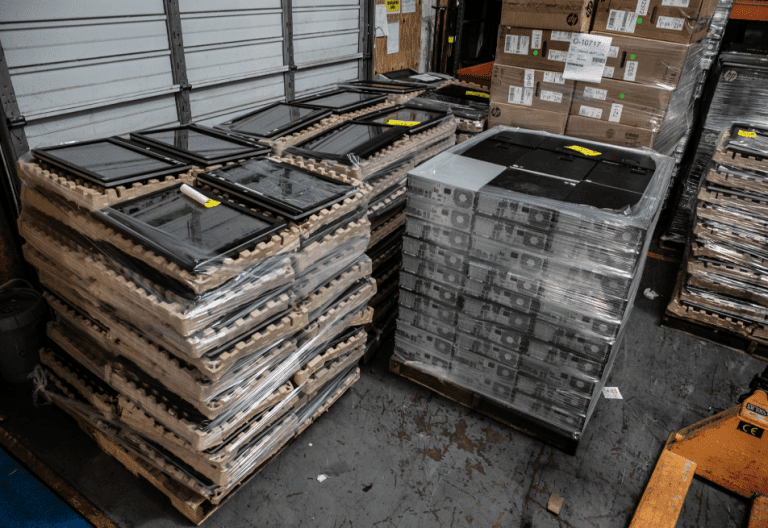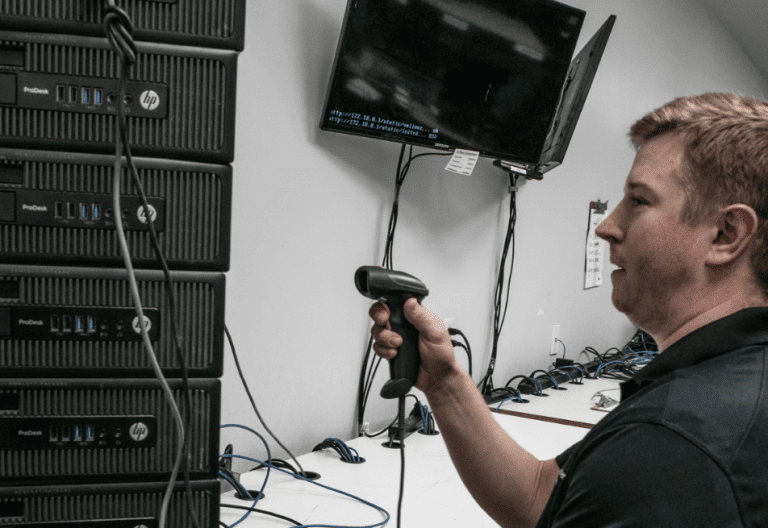ITAD as Part of Cyber Security Asset Management
Cyber security asset management is an ongoing need for organizations of all sizes. In our increasingly digitized world, more and more of our lives are conducted online. From banking to health records and other personal information, the digital landscape is a treasure trove of sensitive data.
It’s no surprise that cyber criminals develop increasingly sophisticated means for circumventing information security measures. The Cybersecurity and Infrastructure Security Agency (CISA) routinely update cyber security best practices to help mitigate risk.
An essential aspect of those best practices involves secure IT asset disposition (ITAD.) Tracking IT assets throughout their entire lifecycle, including disposal, helps minimize cyber risk. Proper ITAD practices can help ensure the IT asset disposition process doesn’t compromise sensitive information, leaving you vulnerable to breach.
Understanding Cyber Security Asset Management
IT assets are an integral part of almost every modern business. To reduce security risks, it’s critical to maintain an accurate inventory of all cyber-enabled technologies within an organization’s ecosystem. After all, you can’t secure something if you aren’t aware of its presence.
Effective cyber security asset management tracks each and every asset. From introduction through retirement, businesses need to know where their assets are in their lifecycle.
This requires vulnerability management, which is a continuous evaluation of emerging security threats. New threats often require altering or upgrading network security or retiring obsolete assets.
In fact, the end of an asset’s lifecycle is an often-overlooked point of vulnerability.


The Role of ITAD in Cyber Security Asset Management
A digital world requires data-bearing devices – and a lot of them. However, rapid advances in technology mean these devices often become obsolete within a short amount of time.
When an IT asset reaches the end of its useful life, organizations must find a way to dispose of them.
Because these assets inevitably contain sensitive data, simply sending unused IT equipment to the scrapheap isn’t acceptable. Not only does it hold personal information, but the component parts of most IT assets present an environmental hazard.
To remain compliant with environmental regulations and cyber security asset management best practices, every business needs an ITAD program. This may be an internal set of practices or an ongoing partnership with a professional ITAD services company.
Proper ITAD helps companies avoid data loss and cyber extortion and helps prevent business interruption. Some important steps to take include:
- Keeping an up-to-date asset inventory.
- Educating employees on the importance of end-of-life data management.
- Disposing of unwanted IT assets in accordance with regulatory standards.
Every device issued within the company should be tracked throughout its lifecycle. Additionally, the stored data must be protected during removal from the ecosystem. Ideally, this includes a secure, auditable chain of custody.
Both data erasure and data destruction are recognized by the National Institute of Standards and Technology (NIST) as effective means of secure IT asset disposition. These include overwriting, block erase, cryptographic erase, degaussing, shredding, and punching.
A company without a functioning ITAD program leaves itself open to cyber-attack. Consequently, they may experience fines, legal penalties and loss of reputation.
Choosing the right type of ITAD process depends on the type of IT asset involved. A certified ITAD vendor can help you determine which method is best for your needs.
ITAD and Cyber Liability Insurance
To help reduce risk, some organizations purchase cyber liability insurance. Insurance carriers require detailed explanations regarding security tools and processes to quality for a cyber security policy.
These processes include multi-factor authentication, security awareness training, separate backups, endpoint detection, and response management.
However, your risk isn’t limited to an IT asset’s active use. Cyber security best practices must follow an IT asset all the way through its lifecycle.
That means safeguarding asset disposal is just as important as when that asset is connected to your network.
Partner with an ITAD Professional
Reducing risk is perhaps the most essential aspect of the professional ITAD industry. As a result, choosing a certified and insured ITAD vendor helps manage cyber security threats.
Industry appropriate insurance coverage shows a vendor’s commitment to their processes. In other words, if something does go wrong, you can rest assured they’ll make it right.
At GCI, you can trust that we’ve taken every available precaution to ensure safe, effective, and compliant asset disposition. This includes general liability insurance and cyber insurance coverage for the what-ifs.
GCI carries both 1st and 3rd party coverage
1st Party Coverage: Covers a business’ liability for a data breach involving sensitive customer information. This includes Social Security Numbers, credit card numbers, driver’s license numbers and health records.
3rd Party Coverage: Provides a remedy in the event of a third-party cyber incident. For example, it covers the costs incurred while notifying customers of a vendor breach.
With end-to-end security measures built into our process, GCI’s ITAD program reduces cyber security risk. As an essential part of cyber security asset management, our ITAD services help protect both your brand and the environment. If you’re a business owner looking for secure ITAD services, contact us today.
or call 770-886-4200
